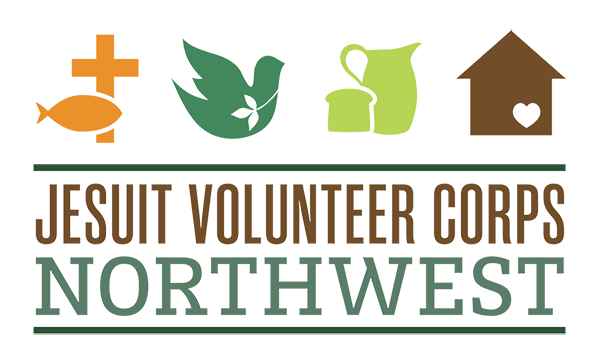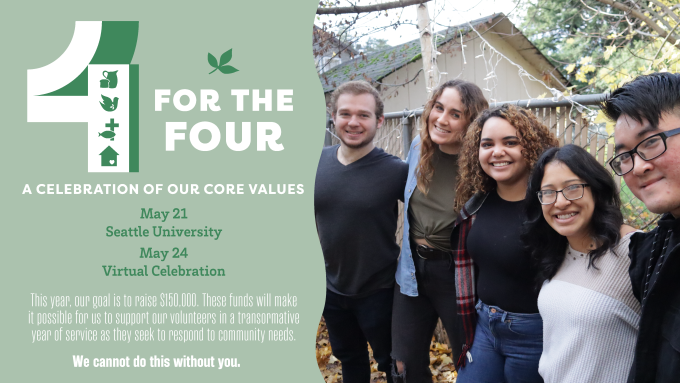Mary Wood (Sitka, AK) serves as the Living with the Land and Building Community Jesuit Volunteer AmeriCorps member at the Sitka Conservation Society (SCS). Here she highlights the value of giving youth a connection to the natural world.
I am serving in the Tongass National Forest, a coastal temperate rainforest which is the largest national forest in the United States. Most of my time is spent with youth ages 5 to 11 in Sitka, leading the Alaska Way-of-Life project 4-H club, and serving with the Fish to Schools program and Stream Team. I am able to be outside with youth almost every day sharing the importance of our place and our ability to live with the land. My hope is that the youth I serve gain a value of stewardship that will last a lifetime.
The programs I offer through SCS are unique to life in Southeast Alaska. We live in a special place where snow-capped mountains meet the sea, where it rains over 100 inches each year, and where people have a strong sense of community with each other and the land. The 4-H members are engaging in experiential education to get outside, explore the world around them, and learn about how they can live with the land.
The 4-H motto of “learning by doing” is very much part of my role here. I am walking with the youth, learning the “Alaska way of life” with them every day. We are able to explore the world around us through genuine curiosity. Not growing up Alaskan myself, I do not always have answers, but that is what a strong community is about: finding the answers together. I have been able to improve my sense of belonging in Sitka and lean on community members to share their knowledge of living with the land with the 4-H members I serve. We have pulled in stream ecologists, and mammal and fisheries biologists to learn more about brown bears, whales, herring, birds, and salmon. Living with the land and building community really is the Alaska way of life in Sitka.
In the fall, I did a series of classes that focused on outdoor safety and survival. We talked about water purification, shelter building, first aid, staying warm, and what to bring with you in a day pack. Many of the 4-H members went home and made their own safety kits which they now bring with them to 4-H hikes so they are prepared for wilderness adventure. A 4-H parent told me, “this is a very important series; chances are this class will save someone’s life.” The wilderness is our backyard here in Sitka. Exposing youth to outdoor skills at a young age will keep them safe while they explore the natural environment around us.
The future of the Tongass is in our hands to protect for generations of people and wildlife to come. This is one of the most magical places I have ever been to, which I now am able to call home. It is through wild places that we are able to connect to the true beauty of the world and find ourselves. We are able to see how life is interconnected here, how the salmon thrive because of the trees, and how the trees are nourished by the salmon. It always comes back to how we can be stewards of our natural environment and live with the land and learn from the land.





